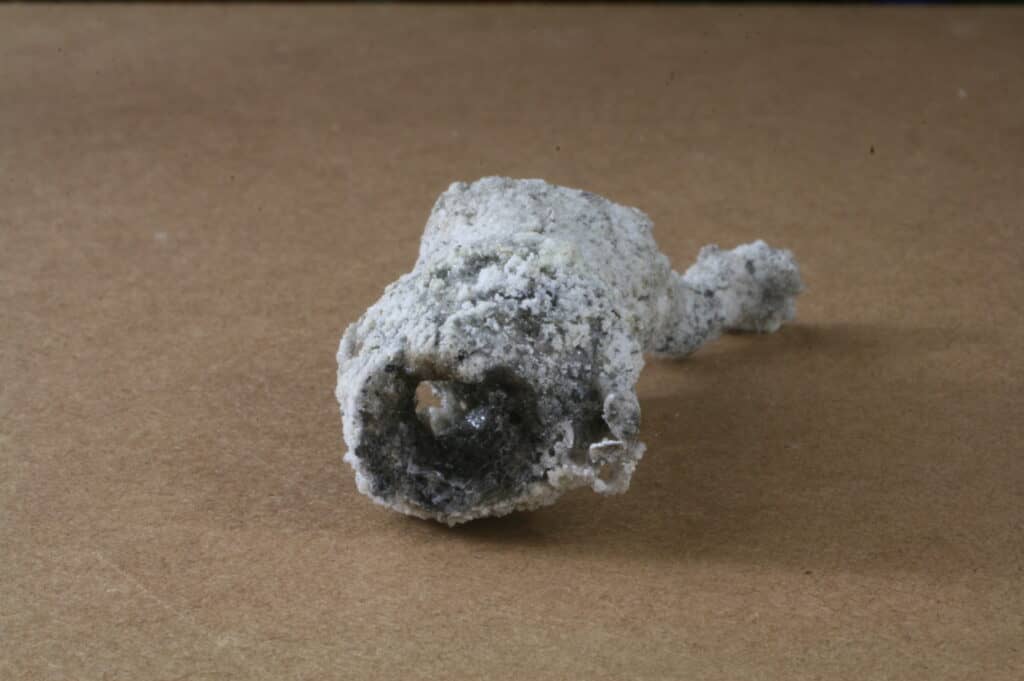Thrive
‘Fossilized lightning’ leads to groundbreaking discovery

A serendipitous eBay purchase led to a University of South Florida professor discovering a new phosphorus material in its solid form for the first time on Earth.
Scientists have found similar compounds in meteorites and in space, but geoscientist Matthew Pasek’s terrestrial discovery began with a lightning strike in a New Port Richey neighborhood. He has spent over a decade researching fulgurites, or “fossilized lightning.”
He said published studies on how high-energy events can cause chemical reactions resulting in unique materials are scarce. Communications Earth & Environment recently showcased his latest research, which could help provide answers to life’s origins.
“If it’s formed here, are there other places it might get formed too?” said Pasek of his ongoing studies. “That can tell us something about phosphorous recycling, and it also may be very relevant for understanding the origin of life on Earth.”
He explained that when lightning strikes a tree – or a live power line hits the ground – the subsequent electrical discharge through rock, soil and sand can form fulgurites. New Port Richey residents found theirs after a 2012 thunderstorm.
Believing the “strange rock” had value, the homeowners put it up for sale. Pasek paid between $100 and $200 for the fulgurite about 10 years ago, but didn’t have it analyzed until he began collaborating with Luca Bindi, a professor of mineralogy and crystallography at the University of Florence in Italy.
Pasek said Bindi has the tools and expertise to study the new material – something between a space mineral and those typically found on Earth. Pasek’s fulgurite included “globs” of dense metal, which he knew was not the aluminum often created by downed powerlines.
“The metals were a material we see very rarely on the surface of the Earth,” he added. “And then jammed in between other weird metals was this new material that we had never seen outside chemistry labs on the surface of the Earth.”
Pasek said the form of phosphite the two geoscientists discovered is something between what is found in phosphate mines and meteorites. NASA funded their study, and they hope to determine if the strange rock’s chemistry can have agricultural and environmental applications.
He explained that phosphorous is a critical aspect of DNA, RNA and cell membranes, crucial to life formation. The new material could provide a unique source of phosphorus for “early biology” and prebiotic molecules to grow.

The research team is now working to classify the recently discovered material as a new mineral. Photo provided.
Pasek said fungicides use some of the calcium and potassium varieties found in the fulgurite, and fertilizers utilize similar phosphates. However, it is unlikely that companies could mine the newly discovered material for commercial purposes due to its rarity.
Pasek also noted he refrains from calling the material a new mineral until it goes through a scientific committee’s approval process. While he believes naturally occurring lightning is solely responsible for the unique fulgurite, he said there is also a chance a downed powerline influenced its creation.
“If it becomes a new mineral, it would be the only form of its kind so far,” Pasek said. “But I have no idea what someone would pay for that yet.”
Either way, Pasek believes he got a solid return on his investment. He has bought pounds of strange rocks for years, typically out of pocket, and said the “fun part of science, is sometimes you spend a bit of money but then get cool things that come out of it.”
While the fulgurite appears metallic from a distance, Pasek said a swirl of blue, grey and white colors emerges when looking closely or through a microscope. He and his research team now hope to receive an official mineral declaration.
According to a USF release, co-principal investigator Tian Feng, a geology program graduate student, attempted to remake the material in a lab. The unsuccessful experiment indicates it forms rapidly under precise conditions and, if heated too long, will become the mineral found in meteorites.
“Previous researchers indicate that lightning reduction of phosphate to have been a widespread phenomenon on the early earth,” Feng said in the release.
Studies into how high-energy events can create new materials are ongoing, and Pasek said they have plenty of unique rocks to test. He also noted a less-publicized breakthrough published in January, where they found a unique phase of matter.
“Something called a quasi-crystal,” Pasek said. “Something that was caused by a downed powerline, in that case. That was bigger in the European press rather than here. I was the second author on that one.”







